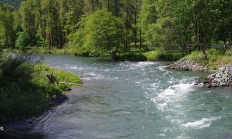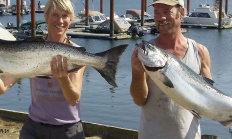
Search myodfw.com







Trout fishing opportunities abound in this zone, known for its high desert climate, sage-covered canyons, glacial peaks and mountain lakes. Anglers will find year-round trout fishing in the Deschutes, Metolius, Fall and Crooked rivers, while several central Oregon lakes and reservoirs are renowned for their trout and kokanee fishing – and their beauty. The Hood and lower Deschutes – both tributaries of the Columbia River – offer high desert fishing for Chinook salmon and summer steelhead.
If you’re new to turkey hunting, or even just new to turkey hunting in Oregon, ODFW offers several resources to help you learn when and where to hunt. The annual Oregon Game Bird Regulations Online resources about the upcoming season and current conditions Classes and workshops Regional wildlife biologists who can help direct you to the best hunting opportunities in their area Know the rules The Oregon Game Bird Regulations (both printed and online) will tell you what licenses and tags you’ll need to hunt turkey, when and where hunting seasons are open, and how many birds you can take



Whether you’re out the night before preparing for your morning hunt, or studying the habits of a flock throughout the year, scouting ahead of your hunt will help you find more birds during your hunt. Use optics to spot birds With binoculars or a spotting scope you’ll be able to spot and study birds from a distance without spooking them. Don't be in a hurry when watching turkeys through binoculars or a spotting scope. The birds won’t know you’re there, so take time to study the hens and toms in the flock. See if there’s a big tom you want




There are two steps in patterning your gun: Verify your point of impact. Confirm the pellets are hitting where you’re aiming. Often called sighting in. Check the pattern of the pellets to see what loads shoot most accurately. Often called patterning. Sight in scopes and fiber optic sites If you’re shooting a shotgun with a single bead on top of the barrel, you can go right to patterning. If you’re shooting a shotgun mounted with a scope or reflex sight, or a fiber optic front and rear site, you’ll need to sight in the gun before you pattern it. Start

